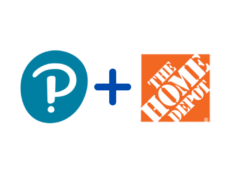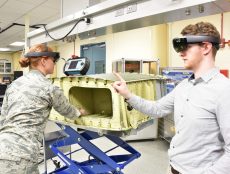
Articles
Industry News
Interviews
Why Fit Learning Remains Human Powered In an Age of AI
By Cait Etherington
July 03, 2019
Most articles published on eLearning Inside focus on education companies that are actively embracing new technologies to disrupt how we assess students and deliver education. This is especially true in the realm of personalized learning where AI is rapidly expanding the ability to evaluate students and deliver personalized curricular materials. But not all personalized learning companies are driven by technology. In this week’s Q & A, we talked to Dr. Kimberley Berens, the founder of Fit Learning–an innovative on-site personalized learning company–to find out why her company remains powered by human educators and a primarily face-to-face operation.
Founding Fit Learning
Cait Etherington – When and why did you found Fit Learning?
Dr. Kimberly Berens – I founded Fit Learning in 1998 as a doctoral student in behavioral and learning science. As a graduate student, I was surprised and disheartened that our field, which is devoted to the science of human learning, was nonexistent in mainstream education and teacher training programs. In fact, we continue to be intentionally marginalized and excluded from general education. The applications of our science continue to only be used with profoundly disabled students.
I find it absolutely shocking that the science of learning does not guide mainstream education. As such, I started an after-school tutoring program on campus at the University of Nevada, Reno. The only space that the university would initially provide us was an old janitor’s closet, which I converted into a session room. Due to the profoundly effective services we were providing and the increasing demand for them from the community, the university gave us more space each year until we eventually privatized the program off-campus in 2003. Fit Learning currently has 31 locations worldwide, with 3 to 5 new locations opening each year. We now offer a formal certification in our instructional method, which consistently produces 1 to 2 years gain in only 40 hours of instruction.
Personalized Learning
CE – Why does personalized learning matter? Are there some types of students who have more to gain from this approach than others?
KB – Learning science is the science of individual differences. Kids do not learn as groups of 30. They learn as individuals and instruction must be designed as such. The fact that we must educate children in groups is due to necessity not intentional design. As such, teachers need training in how to individualize instruction for children despite the fact that they must educate an entire group. Children learn at a different pace, show up to school with different learning histories, have different skills deficits or strengths – all of these sources of individual differences greatly impact how learning goes in the classroom for a child.
The fact that children are expected to learn at the same speed and progress in the same way is one of the major reasons that more than 60% of American school children graduate below proficiency in all academic subjects. All children require individual instruction – just like all children require individual medical treatment. We would never expect all sick children to improve if they were treated as groups of 30, right? We should also not expect this result for children being educated as groups of 30. Learning doesn’t work that way!
Personalized Learning, AI, and Online Learning
CE – Most personalized learning solutions I research and write about for eLearning Inside are driven by AI, not humans. Is any part of Fit Learning, including your assessment process, driven by AI? Why have you made the decisions you have about adopting/rejecting new educational technologies?
KB – Technological advances typically involve only one aspect of instruction – what children need to learn. In other words, curriculum content is presented digitally rather than by a teacher. Unfortunately, a century of learning science has informed us that curriculum does not equal learning and mastery. Instruction involves the how to teach and learning science has led to the discovery of principles or laws regarding how instruction should occur. Effective instruction involves how materials are presented, when and how prompts are provided, how correct responses are encouraged and selected, how feedback is provided, how prompts are faded, how learning is measured, and how mastery is determined.
We are in the process of developing a digital platform that incorporates all of these aspects of effective instruction; however, this is a very difficult task even with the innovations in AI. I will also say that I do not think a computer should or can ever replace a highly skilled teacher – one who has been effectively and masterfully trained in the applications of learning science to instruction. We are developing a digital option for kids who cannot access our services, but it will never be as effective as instruction delivered by a person certified in our methodology.
CE – Fit Learning faces a lot of competition from online tutoring platforms that can generally undercut prices and reach more learners since they tend to have lower overhead and a broader geographic reach. What does Fit Learning offer that these online tutoring platforms can’t offer?
KB – Tutoring companies tend to provide more of the same thing that is already occurring in classrooms. Presenting curriculum without regard to the how of instruction. These approaches are not guided by the science of human learning. As such, they tend to involve exposing kids to content and moving ahead based on time or the subjective opinion of the tutor, rather than based on the precise, on-going measurement of learning such that true mastery can be determined. Moreover, tutoring often involves homework help, where tutors provide prompting through a child’s homework activities. The fact that a child requires help with homework is an indication that essential component skills have not been effectively mastered. Providing homework help becomes a bandaid and a life sentence because the underlying deficits are never effectively addressed.
At Fit Learning, we have systematically identified the essential, component skills learners must truly master in core academic areas in order to independently and successfully move up a ladder of skills. Based on our assessment, we precisely identify component skills deficits and design individual skill building programs that enable us to move all of these skills to fluency – a measure of true mastery that combines accuracy and speed. When learners achieve fluency on component skills, they experience neurological permanence of skills, increased attention span, and the ability to effortless apply such skills to the learning of more complex things. We call this type of transformative outcome cognitive fitness and have produced outcomes like these with thousands of learners.
Next Up for Fit Learning
CE – What’s next for Fit Learning and what are you most excited about at this time?
KB – After being in the trenches for 20 years, I am most excited about disseminating our work on a large scale. I am in the process of writing my first book regarding how to accelerate all learners to their utmost potential using the science of learning as a guide. As I mentioned previously, we have a formal certification and licensing model, so I am thrilled that we are now able to open more locations around the world and make these transformative services available to more kids. We are also in the process of launching our nonprofit organization, Empower Youth, at the national level such that low-income, at-risk kids gain access to our profoundly transformative method of instruction.
The wealth gap in this country grows ever wider and schools consistently fail to effectively educate low-income and minority children. The only access to a better life for disadvantaged kids is through education. It is our mission to provide these kids with the opportunity to access higher education, improve their quality of life, and make a difference in the world. Nothing excites me more than that!
Photo by Green Chameleon on Unsplash.









No Comments